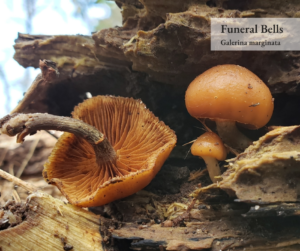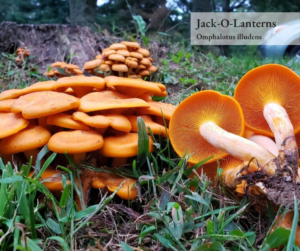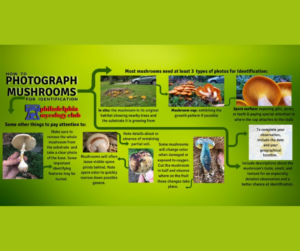According to the Poison Control Center at CHOP, there have been 11 wild mushroom poisoning cases in the last month. While this may seem alarming, severe mushroom poisonings are rare. In our area, there are only a handful of species that will cause life threatening illness or death. These species include: Funeral Bells, Destroying Angels, and Gyromitra korfii. A few others are known to cause severe discomfort and GI distress including Jack-o-Lanterns and the Vomiter.
Here are some FAQs about mushroom safety that everyone should know:
- All mushrooms are safe to touch and must be ingested to cause illness of any kind (barring rare allergies.)
- There are no hard and fast rules or tricks for safely consuming wild mushrooms. The only way to know if a mushroom is toxic is to be positive which species it is. This may mean becoming extremely familiar with edible species AND toxic species before consuming any. It may also mean consulting local experts.
- Toxic mushrooms may take a week or more to show symptoms.
- Always photograph mushrooms (top and bottom) before consuming. Identification will aid in prompt and effective treatment if necessary.
- Like every lifeform on this planet, mushroom species are incredibly diverse throughout the world. An edible mushroom from one continent may look similar to a deadly mushroom in another part of the world. Unfortunately, most instances of mushroom poisonings occur in immigrant families that previously foraged for mushrooms in other countries.
- Lastly, foraging is not permitted on public land within the city of Philadelphia. There are many reasons for this, but an important one to consider is the absorption of heavy metals from our soil, which may also cause illness.
It is best to always use caution when eating any wild foods, but mushrooms are not something to be afraid of or demonize. They are crucial parts of our ecosystems and should be celebrated as such — at a safe distance.
If you care to learn more about safe, ethical, legal, and sustainable mushroom foraging practices, join the Philadelphia Mycology Club by signing up for their mailing list and join their facebook group or post to their iNaturalist project to see what types of fungal life are near you.





 Photos by George Pushkal (@mycojawn) and Bethany Teigen (@jawnattenborough) of the Philadelphia Mycology Club (@phillymycoclub)
Photos by George Pushkal (@mycojawn) and Bethany Teigen (@jawnattenborough) of the Philadelphia Mycology Club (@phillymycoclub)
**All species pictured are considered toxic

Thank you for this!
Wow, super interesting and useful!
I LEARN SOMETHING EVERYDAY! THANKS!